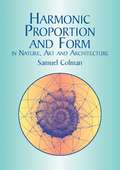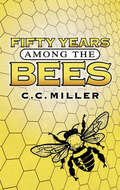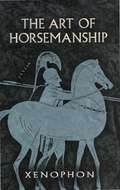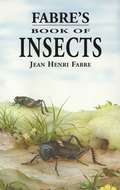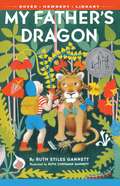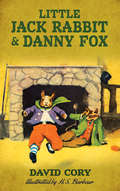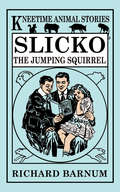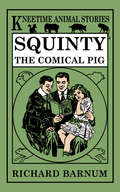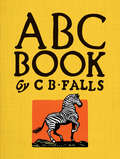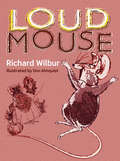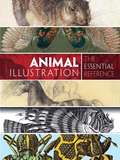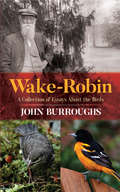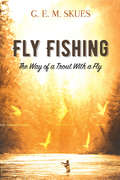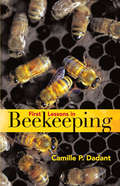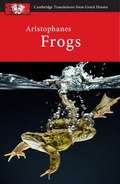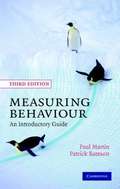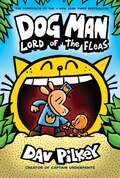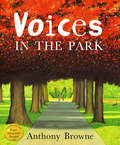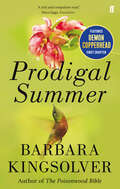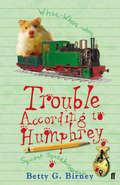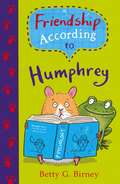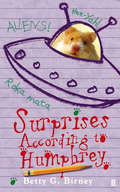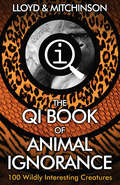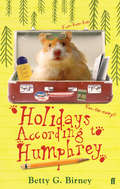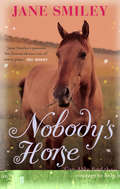- Table View
- List View
Harmonic Proportion and Form in Nature, Art and Architecture (General Science)
by Samuel ColmanA treatise on the laws governing proportional form in both nature and the arts and sciences, this well-illustrated volume amply demonstrates how a design's geometrical construction can captivate both the eye and the mind. Flowers, shells, and other natural organisms appear here, along with artistic creations, in a mathematical study of the similarity of their constructive principles. These principles, in turn, are the fundamental elements by which nature creates harmony.The author, Samuel Colman (1832–1920), was a prominent member of the Hudson River School of painters ("Storm King on the Hudson," his 1866 oil on canvas, is one of his best-known works), and an embodiment through his life and work of the school's celebration of nature through art. As an activist in the politics of art, Colman helped form the Society of American Artists as well as the American Society of Painters in Water Colors, a relatively new medium at the time. He was also a teacher and associate of Louis Comfort Tiffany; in 1879, the two joined forces to establish an interior design firm that included Mark Twain among its clientele.This handsome and provocative volume is enhanced by 302 drawings by the author that complement and amplify each subject area discussed. It also includes an important Mathematical Analysis by the editor, C. Arthur Coan. As a multifaceted study, this book will find an audience among artists and philosophers, as well as scientists and mathematicians.
Fifty Years Among the Bees: Complete Book Of Bee Keeping
by C. C. MillerOne of the few people of his time who actually made a living from bees, C. C. Miller made beekeeping his sole business, beginning as a hobby in 1861 and continuing until his death in 1920, following a long and distinguished career that produced many articles and books on the subject. This volume, long a classic within the beekeeping community, is a practical, yet endlessly charming handbook on all aspects of a romantic and arcane pursuit. Offering advice, observations, and information gleaned from more than a half-century of beekeeping, it covers, among many other topics, the importance of keeping hives clean and well-ventilated, mending combs, maintaining proper hive temperatures, winter storage, the Queen's nursery, harvesting honey, plus a special section of recipes that range from honey cake to salves for frostbite. Written by a major figure in apiculture history, this volume remains a standard text on hive management and the practices and principles of efficient, effective beekeeping.
The Art of Horsemanship
by Xenophon Morris H. MorganAmong the earliest known works on choosing, caring for, and riding horses, this book is still hailed--2,300 years after it was written — as one of the most complete, thoughtful, and accessible guides of its type. Civilization has changed radically in the centuries since it was written, but the equestrian arts have remained essentially the same. Much of what we presently accept as common wisdom about horsemanship derives from this volume.A student of Socrates, Xenophon was an accomplished cavalryman and one of the foremost scholars of his day. This translation by Morris H. Morgan offers a fluid interpretation of the ancient Greek's advice, plus 38 carefully chosen illustrations. Equestrians and other horse lovers as well as military history buffs and students of Greek culture will find The Art of Horsemanship a treasury of practical tips and enlightened observations.
Fabre's Book of Insects
by Jean Henri FabreHailed by Darwin as "The Homer of Insects," famed French entomologist Jean Henri Fabre (1823–1915) devoted hours of rapt attention to insects while they hunted, built nests, and fed their families. Working in Provence, in barren, sun-scorched fields inhabited by countless wasps and bees, he observed their intricate and fascinating world, recounting their activities in simple, beautifully written essays.This volume, based on translations of Fabre's Souvenirs Entomologiques, blends folklore and mythology with factual explanation. Fabre's absorbing account of the scarab beetle's existence, for example, begins with the ancient Egyptians' symbolic view of this busy creature, eventually leading to a careful discussion of its characteristic method of rolling a carefully sculpted ball of food to its den. Elsewhere, he discusses with infectious enthusiasm the physiologic secrets behind the luminosity of fireflies, the musical talents of the locust, the comfortable home of the field cricket, and the cannibalism of the pious-looking praying mantis, among other topics.These charmingly related stories of insect life are a rare combination of scientific study and literary classic that will delight entomologists, naturalists, and nature lovers alike.
My Father's Dragon
by Ruth Stiles Gannett Ruth Chrisman GannettWhen Elmer Elevator tells a stray cat about his dream of being able to fly, he learns of a captive dragon on Wild Island. The dragon has been forced by the jungle residents to serve as their shuttle across a wide river — and anyone who rescues the dragon from its cruel captors might be entitled to a free ride.Elmer needs no further encouragement to stow away aboard a ship to the island, where he matches wits with hungry tigers, an irate gorilla, cranky crocodiles, and other moody creatures. A charmingly illustrated Newbery Honor Book, this comic adventure story has delighted generations of children.
Little Jack Rabbit and Danny Fox
by H. S. Barbour David CoryThe notorious thief Danny Fox is on the prowl, and he likes the appetizing looks of Little Jack Rabbit. Old Sic'em, the Kind Farmer's dog, is determined to keep Danny out of the chicken house, but Jack must rely on his own wits and determination to avoid the wily fox along with his other enemy, Hungry Hawk. Delightful rhymes and illustrations complement each of these stories of Little Jack Rabbit and his woodland neighbors. Originally published in the 1920s, the tales abound in old-fashioned charm and are suitable for readers and listeners between the ages of 3 and 8.
Slicko, the Jumping Squirrel
by Harriet H. Tooker Richard BarnumA family of gray squirrels lives in a tree in the woods -- Mr. and Mrs. Squirrel, Slicko, Chatter, Fluffy, and Nutto. Mama teaches the children to jump from limb to limb so that they can travel without touching the ground, and little Slicko practices hard to become the best jumping squirrel in the forest. When the hunter-man and his dog discover the family nest, the squirrels have to split up and Slicko uses her jumping skills to find safety on her own. The brave little squirrel's adventures begin when she ventures off and meets new friends, including Squinty, the comical pig, and circus performers Mappo, the merry monkey, and Tum Tum, the jolly elephant. But when Slicko falls into a trap she must summon up all her pluck to make the best of a challenging situation.
Squinty, the Comical Pig
by Harriet H. Tooker Richard BarnumSquinty, a brave, bold, mischievous little pig, longs to escape his pen and roam around in the lush green garden - especially the area where the juicy pigweed grows. When Squinty sees his chance, he makes a break for it and sets out on a journey far beyond the garden that's full of surprises, including travels by train and hot air balloon.Before long, Squinty meets Young Bob, who teaches him tricks: finding hidden acorns, jumping across a rope, and standing on his hind legs and marching with a stick like a soldier carrying a rifle. Squinty also encounters Slicko the Squirrel and Mappo the Merry Monkey, other characters from Richard Barnum's heartwarming series of animal adventures.
ABC Book
by C. B. FallsThis classic primer ranges from the familiar Antelope, Bear, and Cat to more unusual creatures ― the graceful Ibis, the aquatic Newt, the legendary Unicorn, and the powerful Xiphius, better known as the swordfish. Originally published in the 1920s, this volume is graced with striking poster art images of every animal. Each letter is represented by a full-page color woodcut illustration. In addition to its value to young learners, the ABC Book will appeal to collectors, bibliophiles, and others who appreciate beautiful books.
Loudmouse
by Richard WilburLoudmouse might be small, but he sure makes a lot of noise! His mama wishes he were a bit quieter, but Loudmouse's booming voice sure comes in handy when there's a cat on the prowl, a mousetrap waiting to be sprung, and a burglar on the loose. Young readers and listeners will delight in this charming tale of the little mouse with the big voice and a taste for cheese.Poet, professor, and father of three, Richard Wilbur wrote volumes of verse that won such coveted awards as the Pulitzer Prize, the National Book Award, and the Edna St. Vincent Millay Memorial Award. His story is illustrated by artist Don Almquist, whose distinctive drawings appeared in leading magazines of the 1960s.
Animal Illustration: The Essential Reference
by Carol Belanger GraftonComprehensive and entertaining, this volume comprises the greatest works in animal illustration from the Middle Ages through the twentieth century. The chronological presentation of hundreds of black-and-white and color images begins with a medieval illuminated manuscript by the Limbourg brothers and the Renaissance works of Albrecht Dürer and other artists from the first centuries of printing. Subsequent illustrations include the seventeenth-century real and imaginary animals of Matthäus Merian and the unique eighteenth-century compilations of Albertus Seba. Nineteenth-century images are drawn from sources as diverse as J. G. Heck's Bilder Atlas; the prints of Georges Baron Cuvier; William Jardine's 40-volume Naturalist's Library; bird illustrations by John James Audubon, Alexander Wilson, Edward Lear, and many others; extraordinary butterfly and insect images by E. A. Seguy, as well as animal illustrations from Victorian chromolithograph die cuts. The exquisite Edwardian bestiary of the Detmold brothers brings the collection into the twentieth century, and ends with the imagery of contemporary dinosaur artist James Gurney.Detailed bibliographical information concerning every source—including biographical details of each artist—makes this collection a vital reference tool as well as a splendid resource of outstanding animal illustrations. Students of graphic art and illustration, as well as graphic designers and advertising professionals, will prize this treasury of material from many rare historic sources.
Wake-Robin: A Collection of Essays About the Birds
by John BurroughsIn the early spring, the blooming of the wildflower trillium — also known as "wake-robin" — heralds the return of migrating birds. In Wake-Robin: A Collection of Essays About the Birds, John Burroughs offers absorbing reading for birdwatchers, nature lovers, and anyone interested in ecology and conservation. This 1871 collection of essays by the distinguished naturalist showcases his special gift for combining scientific accuracy with a grand poetic expression. These essays particularly focus on birds of the Adirondacks and the Washington, D.C. region."What I offer, in fact, is a careful and conscientious record of actual observations and experiences, and is true as it stands written, every word of it. But what has interested me most in ornithology is the pursuit, the chase, the discovery," he notes, adding that "I have tried to present a live bird, a bird in the woods or the fields, with the atmosphere and associations of the place, and not merely a stuffed and labeled specimen." Although scrupulously factual, Burroughs' investigations are less those of a scientist and more in the nature of an experienced and articulate observer who delights in sharing the timeless joys of birdwatching and the outdoors.
Fly Fishing: The Way of a Trout With a Fly
by G.E.M. SkuesAttorney G. E. M. Skues drew upon his vast experience as a recreational fisherman to write this masterpiece of the fly fishing genre, in which he established sunken flies as essential tools for the well-equipped angler. Originally published in 1921, this seminal book retains its relevance in a world in which the quiet pleasures of river fishing remain unchanged. Professional, competitive, and amateur fishermen as well as beginners will appreciate its timeless wisdom.
First Lessons in Beekeeping
by Camille Pierre DadantIn light of the dwindling honey bee population, this century-old guide is more relevant than ever. Written by the scion of a celebrated family of beekeepers that continues to operate today, the richly illustrated volume is the perfect companion for beginning beekeepers as well as those with a casual interest in bees. Reader-friendly information ranges from background on bee anatomy and the social structure of bee communities to different types of hives and how they function, honey production, wintertime beekeeping, and other practical matters. Author Camille Pierre Dadant was the son of Charles Dadant, one of the fathers of modern beekeeping techniques, inventor of the Dadant beehive, and founder of one of the first beekeeping equipment manufacturers. The business is still extant and run by the family, as is their publication, American Bee Journal. The old-fashioned charm of Dadant's narrative rests upon a solid foundation of timeless scientific knowledge, complemented by many informative drawings and photographs.
Aristophanes: Frogs (Cambridge Translations From Greek Drama (PDF)Ser.)
by Judith Affleck Clive Letchford John HarrisonTreating ancient plays as living drama. Classical Greek drama is brought vividly to life in this series of new translations. Students are encouraged to engage with the text through detailed commentaries, including suggestions for discussion and analysis. Numerous practical questions stimulate ideas on staging and encourage students to explore the play's dramatic qualities. Frogs is suitable for students of Classical Civilisation and Drama. Features include a full synopsis of the play, commentary alongside translation for easy reference and a comprehensive introduction to the Greek Theatre. Frogs is aimed at A-level and undergraduate students in the UK, and college students in North America.
Measuring Behaviour: An Introductory Guide
by Paul MartínMeasuring Behaviour has established itself as a standard text. Largely rewritten, updated and reorganised, this third edition is, as before, a guide to the principles and methods of quantitative studies of behaviour, with an emphasis on techniques of observation, recording and analysis. It provides the basic knowledge needed to measure behaviour, doing so in a succinct and easily understood form. The sections on research design and the interpretation and presentation of data have been greatly expanded. Written with brevity and clarity, Measuring Behaviour is, above all, a practical guide book. Aimed primarily at undergraduate and graduate students in biology and psychology who are about to embark upon quantitative studies of animal and human behaviour, this book provides a concise review of methodology that will be of great value to scientists of all disciplines in which behaviour is measured, including biological anthropology, the social sciences and medicine.
Voices in the Park
by Anthony BrowneThe four seasons in a city park are represented by apes in human clothing: a rich, uptight woman in the fall; a sad, unemployed man in the winter; the woman's lonely boy in the spring; the man's joyful daughter in the summer. Each one sees the place and the others differently, yet together the voices tell a story. Full-color illustrations.
Prodigal Summer: A Novel
by Barbara KingsolverIt is summer in the Appalachian mountains and love, desire and attraction are in the air. From her outpost in an isolated mountain cabin, Deanna Wolfe, a reclusive wildlife biologist, watches a den of coyotes. She is caught off guard by a young hunter who invades her most private spaces and interrupts her solitary life. On a farm several miles down the mountain, Lusa Maluf Landowski, a bookish city girl turned farmer's wife, finds herself marooned in a strange place where she must declare or lose her attachment to the land that has become her own. And a few more miles down the road, a pair of elderly feuding neighbours tend their respective farms and wrangle about God, pesticides, and the possibilities of a future neither of them expected. Over the course of one humid summer, these characters find their connections of love to one another and to the surrounding nature with which they share a place. With its strong balance of narrative and drama, Prodigal Summer is stands alongside The Poisonwood Bible and The Lacuna as one of Barbara Kingsolver's finest works.
Trouble According to Humphrey (Humphrey the Hamster #3)
by Betty G. BirneyJoin Humphrey the hamster for his third adventure - and this one is going to be packed with trouble! When all sorts of problems crop up in the classroom, from Pay-Attention-Art's marks going down, to Golden-Miranda finding herself in big trouble, Humphrey must step in to lend a helping paw. Using his charm, resourcefulness and wisdom, he's certain to have a plan. This third instalment follows the brilliantly successful The World According to Humphrey and Friendship According to Humphrey.
Friendship According to Humphrey (Humphrey the Hamster #2)
by Betty G. BirneyDear Friends,When Og the Frog came to live in Room 26, I felt a little jealous. Still, I tried to be welcoming but I soon discovered that it's HARD-HARD-HARD to make friends with a lumpy, bumpy frog! Then I found out that my fellow students were having problems with their friends, too. A.J. and Garth had to deal with a bully named Mean Martin Bean. Heidi and Gail had a terrible argument, and Miranda-Golden had a new stepsister who wasn't nice at all. Then there was the Poetry Festival, the magic show and the snowstorm! How could one small hamster solve all those problems?Luckily, I wrote the whole story in my notebook so you could share my adventures. Your friend to the end,Humphrey
Surprises According to Humphrey (Humphrey the Hamster #4)
by Betty G. BirneySurprises can be good, like my brand new hamster ball or a surprise party. But surprises can be bad, like coming whisker to whisker with a cat (EEK!) or having an alien from another planet move into Room 26. All this and LOTS-LOTS-LOTS more happens in my new book of adventures, Surprises According to Humphrey.
QI: Everything You Think You Know Is Wrong
by John Lloyd John MitchinsonJoin QI's expedition into the animal kingdom to encounter 100 of its most remarkable subjects. Marvel at the elephants that walk on tiptoe, pigs that shine in the dark, and the woodlouse that drinks through its bottom.Albatrosses can fly non-stop for ten years without touching the ground. Box jellyfish have twenty-four eyes. Geese mourn their dead. Koalas don't drink. Monkeys pay to look at porn. Lobsters live for a century. Mice sing while having sex. Spiders can fly.
Holidays According to Humphrey (Humphrey the Hamster #6)
by Betty G. BirneyBritain's best-loved, best-selling hamster is back! But not for long as this time he's off on holiday and he wants to tell you all about the FUN-FUN-FUN times there are to be had along the way!So far Humphrey has won the Richard and Judy Children's Bookclub, been a World Book Day selection, and sold over half a million copies of his adventures in the UK alone.
Nobody's Horse
by Jane SmileyAbby Lovitt has always been more at ease with horses than with people. Her father insists they call all the mares "Jewel" and all the geldings "George" and warns Abby not to get attached: the horses are there to be sold. But with all the stress at school (the Big Four have turned against Abby and her friends) and home (her brother Danny is gone-for good, it seems-and now Daddy won't speak his name), Abby seeks refuge with the Georges and the Jewels. But there's one gelding on her family's farm that gives her no end of trouble: the horse who won't meet her gaze, the horse who bucks her right off every chance he gets, the horse her father makes her ride and train, every day. She calls him the Ornery George.
